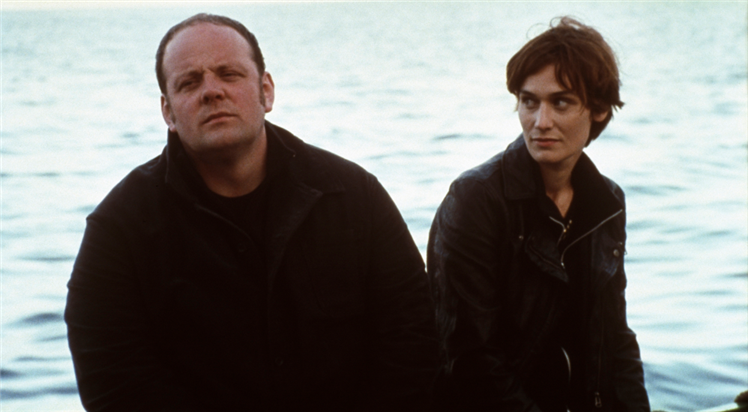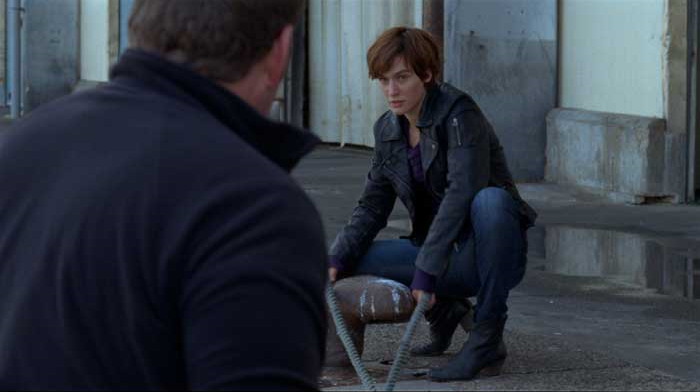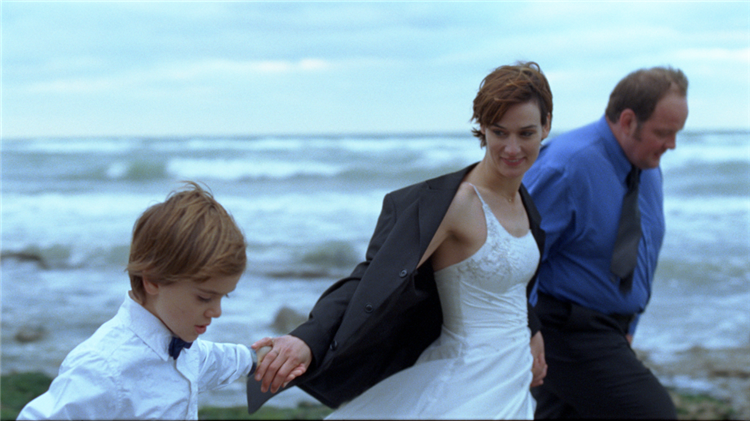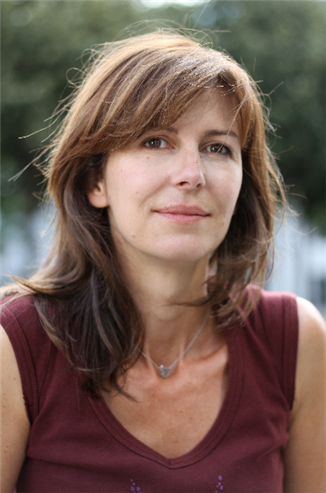4-16-11
Angèle and Tony: Alix Delaporte Casts Her Net in the Rough Seas of Love
By Diane Sippl

Funny that she’s called “Angèle,” we think when the film opens, as we see her maneuver a three-minute sexual encounter behind a wall on the street to get her hands on a hot new child’s toy. “It’s Action Man – the latest on the market in China. You wanted Action Man, didn’t you?” he asks, as they both zip up their pants. This little episode of Alix Delaporte's incisive new film, Angèle and Tony, screening on April 16th at COL-COA, ironically prefigures the core of this story about an attractive woman who knows what she wants and wants it now; she also presumes to know how to get it, for all intents and purposes. A man, yes, but not this man. And a toy yes, for her young son. The question is, how will she get the right man so as to get back her son?
Just out of prison, Angèle (Clotilde Hesme) has no husband, no home, no job. What she does have is a response to an ad she ran in the personals, and a very unlikely-looking candidate turns up to meet her. “You need someone from the city,” he tells her, “someone more like you. I’m a fisherman. That’s what I do.” His name is Tony (Grégory Gadebois) and he lives with his mother on the coast of Normandy. Hefty in stature and short with his words, he’s as blunt as she is imposing. He gives her a lift but then can’t get rid of her, and while he pushes away her abrupt physical advances, faster than he can say “No,” she’s moved in at his home and has a paper in-hand proving she sells fish and “uploads” for him. In fact she’s happy enough to learn the difference between dogfish, sand dabs, and sole – and maybe not so happy to start gutting fish beside Tony’s widowed mother. That woman is just beginning to find out, well before Tony, that Angèle is a widow, too, and hasn’t told Tony about her past.

Angèle appears to be propelled by her anxiety, her lanky torso at full-tilt forward as she charges ahead in her agenda, whether with her leggy stride or on her stolen bicycle. Tracking shots follow her alone on the open road, her shoulders rocking left and right as she pedals along, her head thrust like a ship’s masthead into the camera. Anyone but Tony might find her ferocious, but since he looks like he could take on Moby Dick, he can probably handle Angèle. What he can’t wrap his head around is why she’s so bent on him. His ticking- time-bomb of a brother certainly looks more her type, physically taunting the riot squad facing off with him when he and the other fishermen of the village protest the quotas. The same brother obsessively sends his cronies down into the depths of the sea to search for his drowned father.
Far from what the opening scene of the film might suggest, the pent-up heat in these characters plays itself out in something very different from sex. Soon enough Angèle attempts to retrieve her son from her parents, who are soon to appeal for official custody. The moments leading up to the court hearing are wrenching as the three generations of Angèle’s family gather in the court’s waiting room and the boy starts running in circles. When he’s called in to see the judge alone and Angèle repeats the same circular pacing in a rage, finally bursting through the closed courtroom doors, “It’s no use – he doesn’t want me. He’s not ready.” It’s the crux of the issue in the entire film: no one’s ready — not the boy, not Angèle, not Tony. But they will be, once they can allow themselves to do the work of getting to know each other.

This film is about that work, in all its awkward, painstaking, backward-forward, rocking movement. The seascape is photographed with the tacit luster of authenticity. The dialogue is terse, the emotions primal, and the actions crucial, one step at a time and each wedged into its proper place. As these gruff and withholding characters grow on each other (and on us), what for the longest time looks like a calculated play upon needs, coming from both directions, emerges as the raw, involuntary gift of listening to one’s instincts. In many ways, Angèle and Tony have been on the same path, but they only discover this and begin to trust in each other as they learn to trust themselves.
Alix Delaporte wrote and directed Angèle and Tony as her debut feature. She had already worked with her lead actress, Clotilde Hesme, in an earlier film, the short, “How Do You Break on a Downhill?”, which won the Golden Lion at the Venice International Film Festival in 2006. Furthermore, she had also already seen Clotilde Hesme and Grégory Gadebois act together on stage in 2006 at the Theatre des Abbesses, where the two leads played a couple with a child in Getting Attention by Martin Crimp, directed by Christophe Rauck.
Alix Delaporte noted Gadebois’ virility which, along with her own deep familiarity with the village life of Low Normandy, often persuaded audiences of Angèle and Tony that Gadebois was a fisherman by profession, rather than a resident of the Comédie-Française, where he has been admired for his finesse as an actor. Clotilde Hesme found the chance to play her first full leading role in a feature film with Angèle and Tony after achieving milestones with smaller roles in Mysteries of Lisbon by Raúl Ruiz, Regular Lovers by Philippe Garrel, Love Songs by Christophe Honoré, and The Grocer’s Son by Eric Guirado at COL-COA 2008. Grégory Gadebois was seen in Gainsbourg last year at COL-COA 2010.
Angèle and Tony is one of the few films presented twice at COL-COA 2011; in addition to its Saturday night, prime-time screening at 7:30, it has played earlier in the week, as the “Blind Date with French Cinema,” winning remarkable admiration. Writer-director Alix Delaporte is on-hand at the April 16th screening of Angèle and Tony at the Directors guild of America for a post-film Q & A with the audience.

Writer-Director Alix Delaporte
Angèle and Tony
Director: Alix Delaporte; Producer: Hélène Cases; Writer: Alix Delaporte; Cinematographer: Claire Mathon; Editor: Louise Decelle; Sound: Pierre Tucat, Arnaud Rolland, Eric Tisserand; Music: Mathieu Maestracci; Set Design: Hélène Ustaze; Costume Design: Bibiane Blondy, Dorothée Guiraud, Julie Couturier
Cast: Clotilde Hesme, Grégory Gadebois, Evelyne Didi, Antoine Couleau, Jérôme Huget, Patrick Descamps.
Color, 35mm, 87 min. In French with English subtitles.